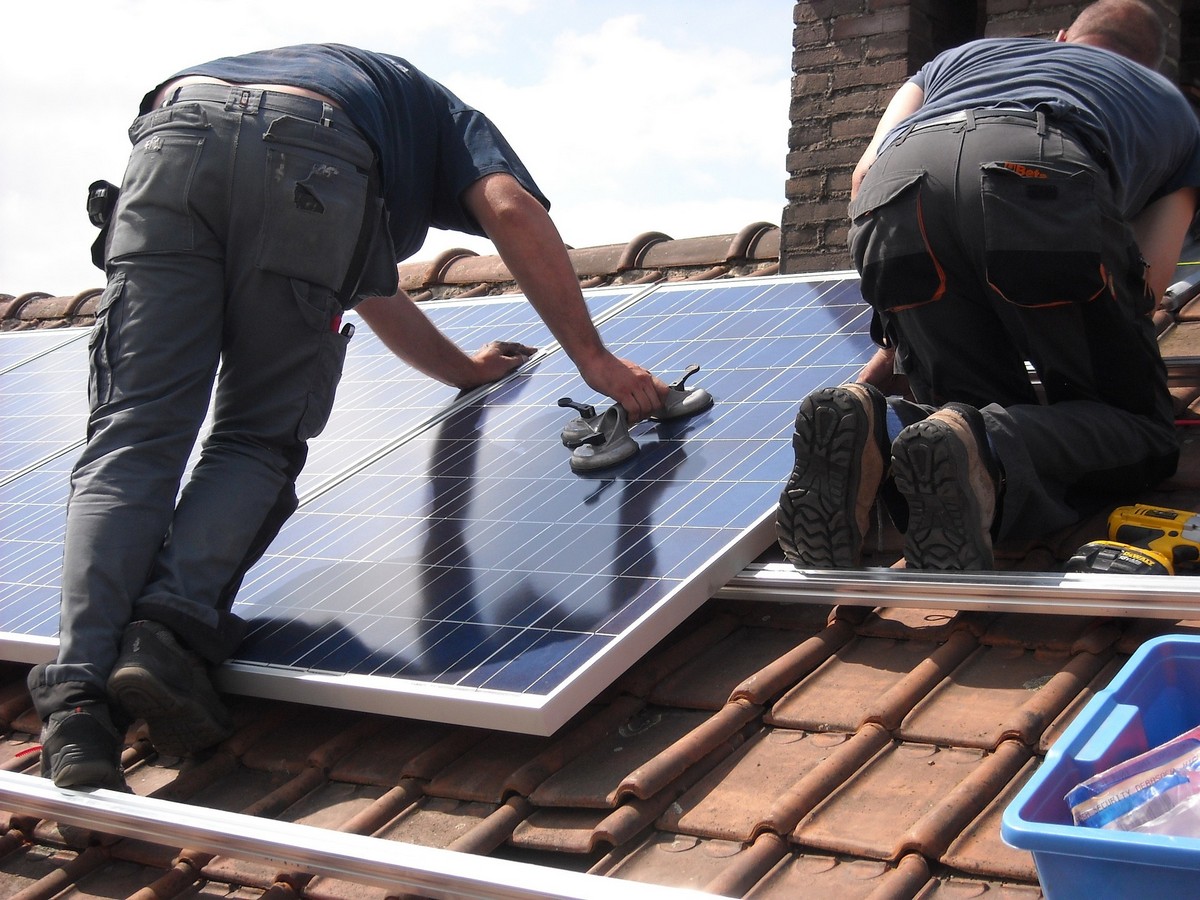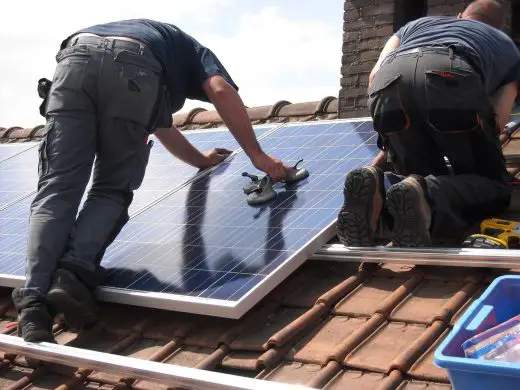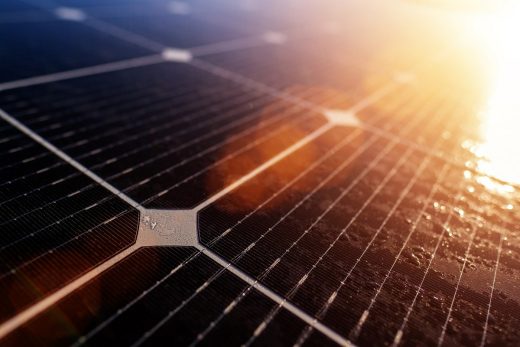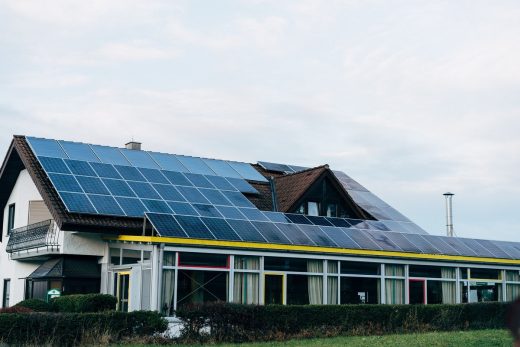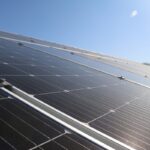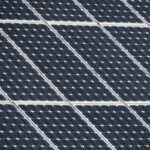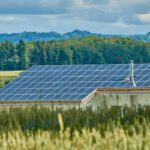Home Solar guide, USA photovoltaics renewables save money advice, American building PV electricity
Home Solar US Photovoltaics
23 May 2023
Even with all the solar power harvesting that is taking place in the world as many countries join the solar movement, imagine, we are nowhere near to using even 0.005% of the sun’s power.
This Rockstar of the solar system is just a marvel of energy. Besides, the energy is renewable – the sun’s power will never be depleted.
If you are ready, you can start tapping into this vast energy, and lower your electricity bills. The initial investment will be high, but with the system’s lifespan of up to 30 years, well, it will pay itself over several times.
To get the most out of your home solar system, you need to do the installation just right. For this, the buck stops with the company that you hire for the job, such as Impact Energy Castle Rock Colorado Solar. It serves Florida, Montana, and Colorado.
So, what are the steps for a home solar installation that you must follow? They are as follows:
1. Choose a good solar company
The solar installation company that you choose can make or break your home solar experience. There are so many companies, some well-established and some coming up.
The internet has made things so easy, but do not just contract any company that you find online. You need to do your own vetting.
There are few things that the company must meet. These are:
Area of service – You need a company that is based in your area. On their website, check their area of service. If you contract a company from another county, they will transfer the transport expenses to you.
Good web & social media presence – A solar company that has a wide social media presence is easy to trust. On social media, people will troll the company if they have had a bad experience with it.
Gives a free solar estimate – The solar installation company should give you a free solar estimate for your home. For that, they will require you to enter details like your street address.
They will use the peak sunlight hours of that place and divide it by the solar panel’s wattage. That should generally show an estimate of the number of solar panels you might buy. Of course, the best way to know the home solar system that you need is by having a solar design technician on site.
Look for reviews – Check reviews that other people have left for the company in question. You should be wary about a company that has no reviews. To avoid fake reviews, check whether the company is listed with agencies like the Better Business Bureau (BBB).
Customer experience – Do you like the experience you have got on the company website? If you reach out with an email or chat, check the response time. If their customer care experience sucks at this stage, it won’t improve.
2. Determine your solar energy needs
Knowing the energy needs of your home will enable you to know how many solar panels you need to buy.
Do not install a renewable energy system blindly. You don’t want to find out when it is already too late that the solar panels don’t meet your energy needs.
Knowing how much energy you require is not enough. Solar panels require enough space for installation. Even if your budget allows you to buy more solar panels, but you don’t have the space, it won’t help.
Some of the things that determine a home’s potential to produce energy include the size and angle of the roof, since you can only install the solar panels in the available space.
A roof that is angled towards the sun can generate more energy because the solar panels get more hours of exposure to direct sunlight.
This does not mean flat roofs are not any good, because they have proper exposure to the sunlight. You can also install solar panels in an open space outside the house; not only on the rooftop.
If there are trees in the vicinity of the house whose shadows reach the roof, they should be cut down or trimmed. Also, it is dangerous to have branches hanging over the solar panels because they can cause irreparable damage. Falling twigs can break the panels.
To determine how many solar panels you need, you have to do the following:
- Measure the available space
- Calculate the energy needs of appliances you intend to power with solar
- Your budget
If your budget allows, it is better to install solar panels that can produce more energy than you think you need. You can always sell the excess energy back to your utility company through the net-metering system.
3. Solar design and documentation
After choosing a good solar installation company, you need to start on the paperwork to get approval. You require permission before you can start your installation.
The work of a solar technician is to design the solar system, in such a way that it will help you get approval fast.
You cannot install your home solar system without two permits or approvals. These are:
- Permit from the local building authority
- Authorization from the utility company
The permit from the building authority is to ascertain that the roof of your house can carry the weight of the solar panel installation. The installation of the solar panels on the roof is considered a new construction.
The approval of the utility company is required because you will interconnect the solar and the main grid systems.
To seek approval, you must fill the relevant paperwork. You must also submit your home solar design.
4. Do the math on your electricity bill
Before you can start your solar installation process, you must have a goal in mind. For everyone, that goal is to save money on electricity bills. But you cannot save money unless you have a figure in mind.
Start by evaluating your electricity bill. For instance, let’s assume you live in Florida in a 2500-square-foot (232.26 m²) home. On average, you will pay $192 for electricity every month. In a year, you can pay approximately $2500. In this case, your goal will be to lower your electricity bill cost from $2500 to $1000, or less per year.
Pass this information to the solar installation company, and they will design a home solar system that will meet your goal.
But solar power is not only good for households and that have a high electricity consumption. Even the households that consume low electricity every month should change to renewable energy.
However, before then, all homeowners should find out how they can make their homes more energy efficient. They can do this by resealing the windows and the doors, buying new Energy Star rated kitchen appliances and insulating the crawl spaces.
If your energy consumption is low, talk to a solar installation company to know whether it is possible to eliminate the electricity bill completely. They can design a solar system that can help with that..
5. Check whether there are incentives for installing home solar
To encourage people to move from non-renewable to renewable energy, the federal, and state governments have been offering incentives to people who install home solar systems.
You can ask your solar installation company the types of incentives you qualify for, to save money. Look for the federal and state solar power incentives so that you can benefit from them and save more money.
One of the biggest incentives is the federal government ITC – Investment Tax Credit, which enables you to deduct between 20 and 30 percent of the whole solar installation cost from the taxes payable to the federal government.
If your state gives an incentive fashioned after the federal ITC, you can deduct another from the taxes that you pay to the state. A 30 percent federal and 30 percent state reduction from your taxes can save you a couple of thousands of dollars.
Check for other opportunities to save money, such as cash rebates that are available for a time. Some are offered for a certain time, but you could get lucky.
Another way to save money on this investment is to check whether your utility company is offering a rebate on solar installations. Manufacturers of solar equipment and installation companies offer such benefits from time to time. Asking won’t hurt!
6. Know the solar-installation cost beforehand
Before the work can start, you need to know how much the solar installation job is going to cost. This includes the cost of the materials and the installation. Having a figure on paper will enable you to consider the available options and your budget.
By 2023, the estimate for home solar systems was between $6,600 and $23,000. This includes the cost of installation. This is a lot of money and even if you will receive a federal tax credit of 30 percent, state tax credit, and other incentives, first, you have to spend it.
Mostly, you don’t have the money. Therefore, you need time to look for financing and thankfully, there are many options in the market. Look for solar panel loans, which come in the form of home equity loans, personal loans, and contractor financing among others. You might qualify for one or other, depending on your credit score.
The installation company you are working with should give you the list of expenses beforehand so that you can know what you are up against and prepare accordingly.
Home Solar US Photovoltaics – Wrapping it up
A home solar installation is a big project, and it requires ample preparation, money and time.
The building approval, and the utility company paperwork will take time, and you cannot start the installation without it.
Finding a good solar installer to guide you through the entire process helps. If you don’t have enough money, ask them whether they can help you get contractor financing.
After financing everything by a loan, the solar installation will pay itself back by 15 years. Since the expected lifespan of this system is 30 years, it makes economic sense to install it.
Comments on this guide to Home Solar US Photovoltaics – building photovoltaic electricity article are welcome.
Solar Panels Articles
Solar Panels Posts
How architects implement solar panels in design
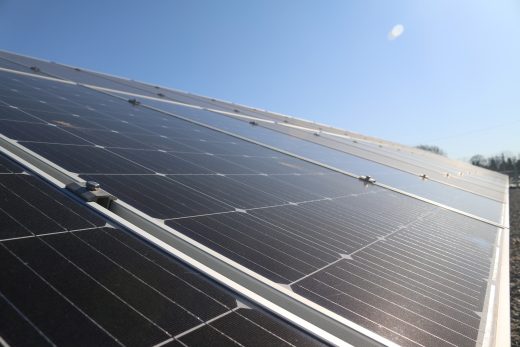
image source : pixabay.com
DIY Solar System: how to install solar panels
Before Installing Solar Panels
Installing Solar Roof Ventilation in Your Home
Building
Residential Architecture Articles
Comments / photos for the Home Solar, building photovoltaic electricity advice guide page welcome

